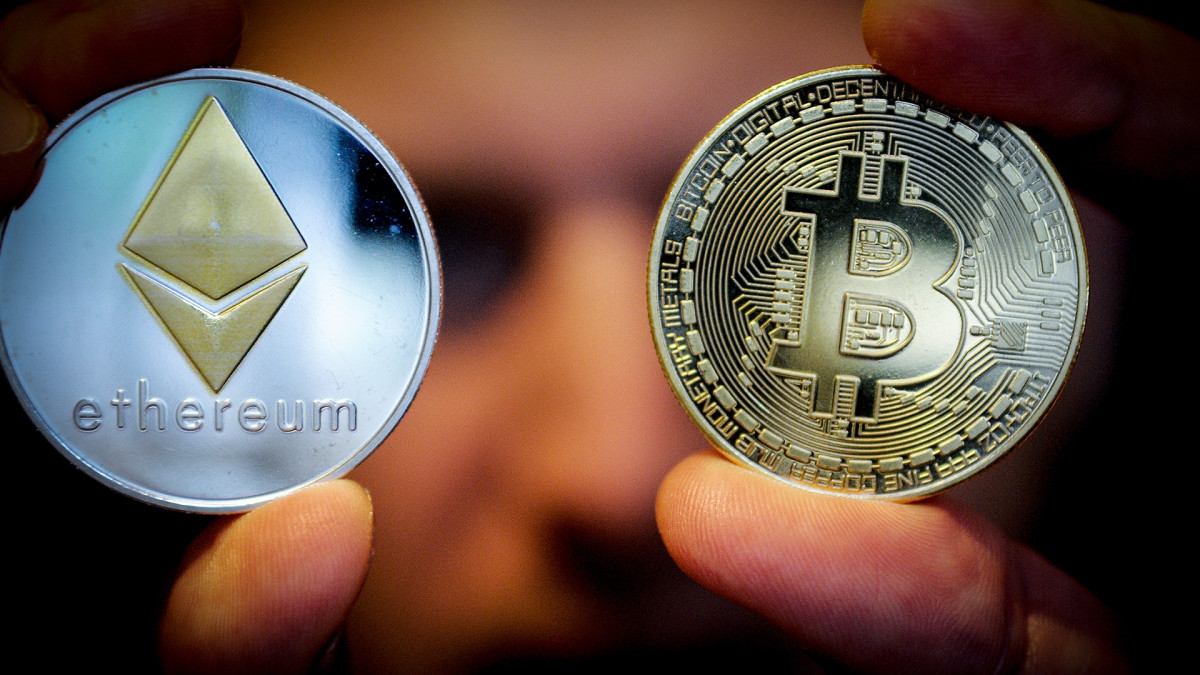Cryptocurrency investors have arguably just had one of the least chaotic weeks in several months now.
Overall, prices have stabilized.
The market as a whole is back above $1 trillion. Admittedly, we are still very far from the $3 trillion reached in November in the midst of crypto mania, but it is much better than the thresholds of $700 billion and $800 billion to which the market fell in June and early July.
All eyes remain focused on bitcoin (BTC), which concentrates 40% of the value of the digital currency market. The king of cryptocurrencies is now moving around the $24,000 threshold after dropping to $18,000 in June.
Over the last seven days, BTC is up 3%, according to data compiled by the firm CoinGecko. Its market value is estimated at about $455 billion.
But the real star of the market rebound is Ethereum or Ether (ETH), the second digital currency by market value. Over the last seven days, ETH has gained more than 7% and is currently trading around $1,700 for a market value of $203.6 billion at the time of writing. ETH represents 18% of the cryptocurrency market.
A wind of optimism is currently blowing in the direction of ETH.
The reason is simple: the Ethereum ecosystem, which allows payments to be made using its native cryptocurrency ETH, is on track to achieve the largest update, called the Merge, in its history scheduled for September 19.
Bitcoin and Ethereum are fundamentally different because the former was designed to enable decentralized finance while the latter was designed to also enable applications and contracts.
Both systems use blockchain technology to validate and record transactions, but an upcoming change in the way Ethereum operates will mean that the way they do it is different, with consequences for speed, durability, reliability, and accessibility.
On Ethereum we have seen the emergence of various trends such as initial coin offerings (ICOs), Decentralized Finance (DeFi), non-fungible tokens (NFTS) and more recently the metaverse.
However, network performance is unable to keep up with the growing demand. Thus, for several months Ethereum has been the victim of significant congestion. One of the main consequences of this congestion has been the drastic increase in fees on the network.
The developers have imagined several developments aimed at improving the performance of the network and allowing it to process a larger volume of transactions, without negatively impacting the user experience.
These changes have long been grouped under the name of Ethereum 2.0. The main changes are the passage from proof-of-work to proof-of-stake, and the deployment of sharding, a solution aimed at splitting the network into several subnets, in order to increase the processing capacity.
Proof-of-work asks participants to perform complex calculations for the chance to become the user who will validate a set of transactions and add them to the blockchain, which will allow them to earn a certain amount of cryptocurrency.
The "work” is to guess, as accurately as possible, a unique 64-character alphanumeric string. This work used to be done by amateurs, but the processing power needed increases over time, so the 'mining' process is now reserved for specialized companies and organizations, meaning those who can afford to buy the hardware and power to run it.
Proof-of-work consensus mechanism such as bitcoin have come under a lot of criticism due to the amount of power expended by the computer hardware used.
Proof-of-stake asks participants to stake their own money for the chance to validate transactions and add a block to a blockchain, rather than performing complex calculations.
The more cryptocurrencies a person stakes, the more likely they are to be chosen to complete a block of transactions on a blockchain and earn a set amount of coins. Not requiring powerful hardware, proof-of-stake is considered a greener consensus mechanism than proof-of-work.
Ethereum "will use at least ~99.95% less energy post merge," said the Ethereum Foundation.
The merge aims to connect the "application” part of Ethereum as we know it, namely the entire application ecosystem (Ethereum 1.0), to the new consensus mechanism of proof-of-stake (Ethereum 2.0). As a reminder, this consensus layer was deployed in December 2020, via the launch of the beacon chain.
Basically, Ethereum will become the addition of Ethereum 1.0 (execution layer) + Ethereum 2.0 (consensus layer).
The Ethereum developers hope to complete the merger of the two entities on September 19 after a third test scheduled for August. The first two tests, one in June and another this month, went off without a hitch.
The main advantages of the merge are that transaction costs will drop, and it will streamline and speed up operations.
Author
Administraroot


